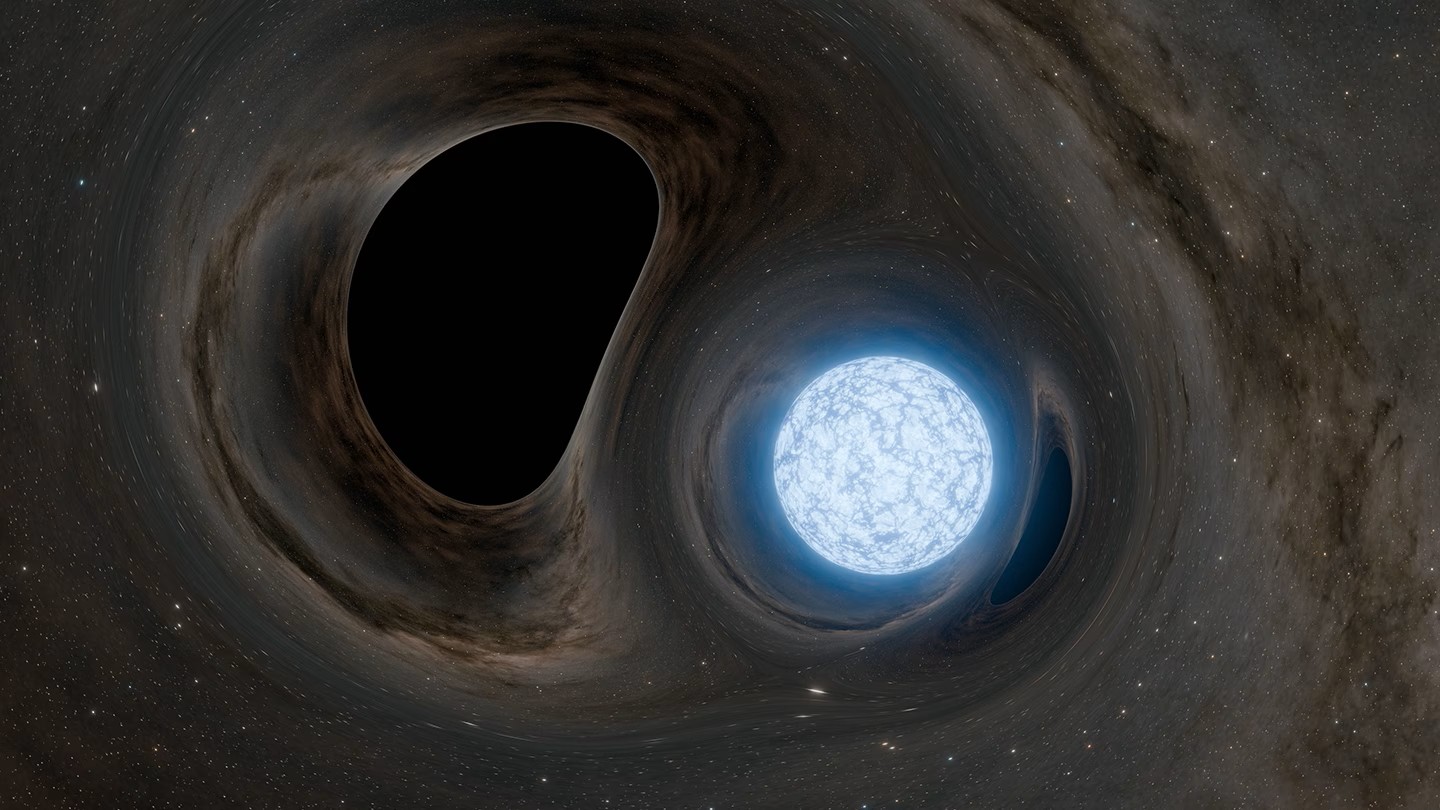This is what Earth looks like from the moon's south pole (video)
NASA hopes astronauts will see this for real, later in the decade.
The weird motions of planet Earth and its sun will be a fun sight for future NASA astronauts standing on the south pole of the moon, if a new agency animation is any indication.
NASA's Scientific Visualization Studio at the Goddard Space Flight Center in Maryland released the short video compressing a simulated viewpoint over three months (or a little over three lunar days) into two minutes. You can see Earth bobbing up and down while the sun does a more graceful glide around the horizon.
If you keep a close eye on the video, after a while you'll be treated to an eclipse of Earth passing in front of the sun, which is the opposite of lunar eclipses that we can see from Earth.
"For observers on Earth, this is a lunar eclipse, in which the moon passes through the shadow cast by Earth. Viewed from the moon, however, this is an eclipse of the sun," the NASA studio said in the video description.
Related: Every single mission to the moon ever

The virtual camera in the animation is on the rim of Shackleton Crater, partially visible in the bottom right, and is aimed at Earth. This is approximately the same region that NASA is targeting for its Artemis moon-landing missions.
The agency hopes to put boots on the surface later in the 2020s, with a suite of robotic explorers joining the effort. Those payloads, collectively known as the Commercial Lunar Payload Services (CLPS) program, may touch down on the moon as early as 2022.
Get the Space.com Newsletter
Breaking space news, the latest updates on rocket launches, skywatching events and more!
NASA's Artemis 1 mission, an uncrewed loop around the moon and then back to Earth again, is expected to launch in February 2022, the agency announced last week. The mission was delayed several times due to technical issues.
The next planned mission is Artemis 2, a crewed lunar orbiting mission that will fly the first international astronaut (a Canadian) to the moon's vicinity. The very tentative date for that is 2023. NASA then hopes to have Artemis 3, a landing mission, touch down in 2024.
But these dates may change as Artemis 1 is finalized and technology development and funding are further along. The spacesuits for Artemis, for example, appear to be too far behind to make a 2024 deadline, according to NASA's inspector general.
Follow Elizabeth Howell on Twitter @howellspace. Follow us on Twitter @Spacedotcom and on Facebook.
Join our Space Forums to keep talking space on the latest missions, night sky and more! And if you have a news tip, correction or comment, let us know at: community@space.com.

Elizabeth Howell (she/her), Ph.D., was a staff writer in the spaceflight channel between 2022 and 2024 specializing in Canadian space news. She was contributing writer for Space.com for 10 years from 2012 to 2024. Elizabeth's reporting includes multiple exclusives with the White House, leading world coverage about a lost-and-found space tomato on the International Space Station, witnessing five human spaceflight launches on two continents, flying parabolic, working inside a spacesuit, and participating in a simulated Mars mission. Her latest book, "Why Am I Taller?" (ECW Press, 2022) is co-written with astronaut Dave Williams.
